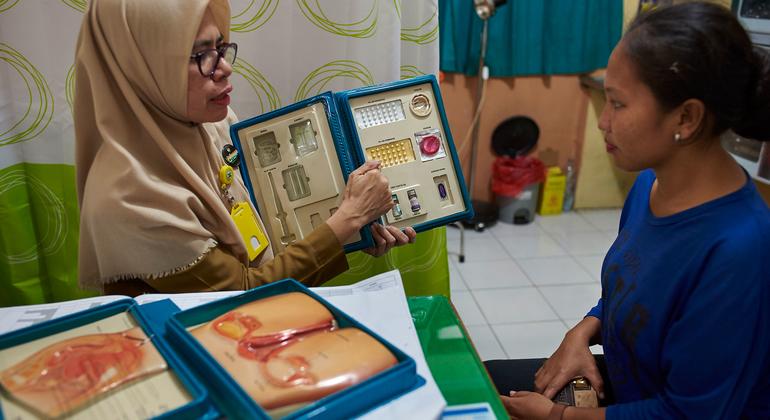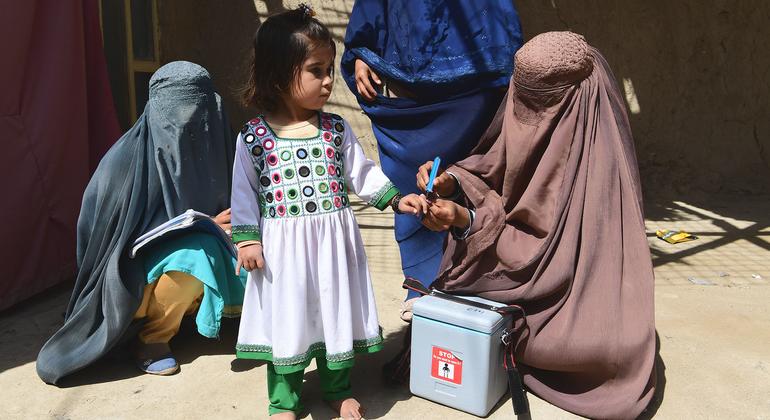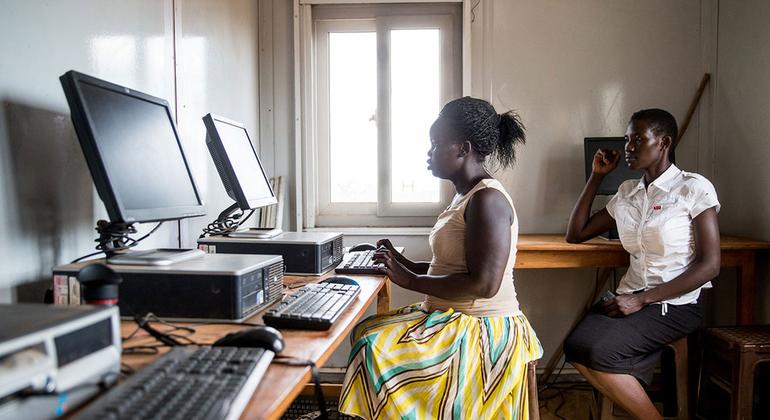Updated family planning guide promotes empowerment, health and wellbeing – WHO |

[ad_1]
WHO’s updated landmark Family Planning Handbook, launched on Tuesday, informs health workers on protecting access to family planning services during emergencies, and provides policy makers with the most current information on contraceptive options.
“Family planning promotes self-actualization, empowerment, as well as health and wellbeing, and reduces maternal and infant deaths through the prevention of unintended pregnancy and unsafe abortion”, said Pascale Allotey, WHO’s Director for Sexual and Reproductive Health and Rights.
Drawing on lessons learned, it also expands guidance for women and young people at high risk of HIV.
‘A vital resource’
Experience from recent outbreaks shows that family planning services can be severely compromised during emergencies.
During the initial phases of the COVID-19 pandemic in 2020, approximately 70 per cent of countries reported disruptions to these vital services – intensifying risks of unintended pregnancies and sexually transmitted infections.
The manual advocates for continued family planning support services during epidemics, including through wider access to self-administered contraceptives, pharmacy distribution and multi-month supplies.
“This updated Family Planning Handbook is a vital resource, helping health workers support contraceptive users around the world in making informed choices about the right contraceptive options for them”, said the senior WHO official.
Self-injections
Self-administered contraceptives include condoms, contraceptive pills, some diaphragms, spermicides and most recently, the option of self-injection of a progestin-only contraceptive, called DMPA, which can now be safely administered just under the skin rather than into the muscle.
Many women prefer private and non-intrusive injectable contraceptives that require action only every two to three – making this option likely to increase uptake.
“The updated recommendations in this Handbook show that almost any family planning method can be used safely by all women, and that accordingly, all women should have access to a range of options that meet their unique needs and goals in life,” said lead author Mary Gaffield.

Family planning supports health and reduces maternal and infant deaths by preventing unintended pregnancies and unsafe abortions.
High-risk focus
For the first time, the 2022 edition includes a dedicated chapter to guide family planning services for women and adolescents at high risk of HIV, including people living in high HIV prevalence areas and those with multiple sexual partners or whose regular partner is living with HIV.
While only condoms protect against HIV and other sexually transmitted infections, all contraceptive options – with the sole exception of nonoxynol-9 spermicide – are now considered safe for women and young people at high risk of HIV as they have not been found to increase risk of HIV transmission or contract infection.
For those at high risk of HIV, the manual states that testing, counselling and first-line clinical care and referrals should all be offered as part of family planning services.
“Family planning services can be provided safely and affordably so that no matter where they live, couples and individuals are able to choose from safe and effective family planning methods”, underscored the lead author.

Adolescent pregnancy is a global phenomenon with clearly known causes and serious health, social and economic consequences.
Added pluses
The handbook also incorporates WHO’s latest guidance on cervical cancer and pre-cancer prevention, screening and treatment, which can all be provided through family planning services; management of sexually transmitted infections; and family planning in postabortion care.
Now in its fourth edition, the handbook is the most widely used reference guide on the topic globally, with over a million copies distributed or downloaded to date.
It is complemented by the medical eligibility criteria tool for contraceptive use, also downloadable as a dedicated App.
[ad_2]




